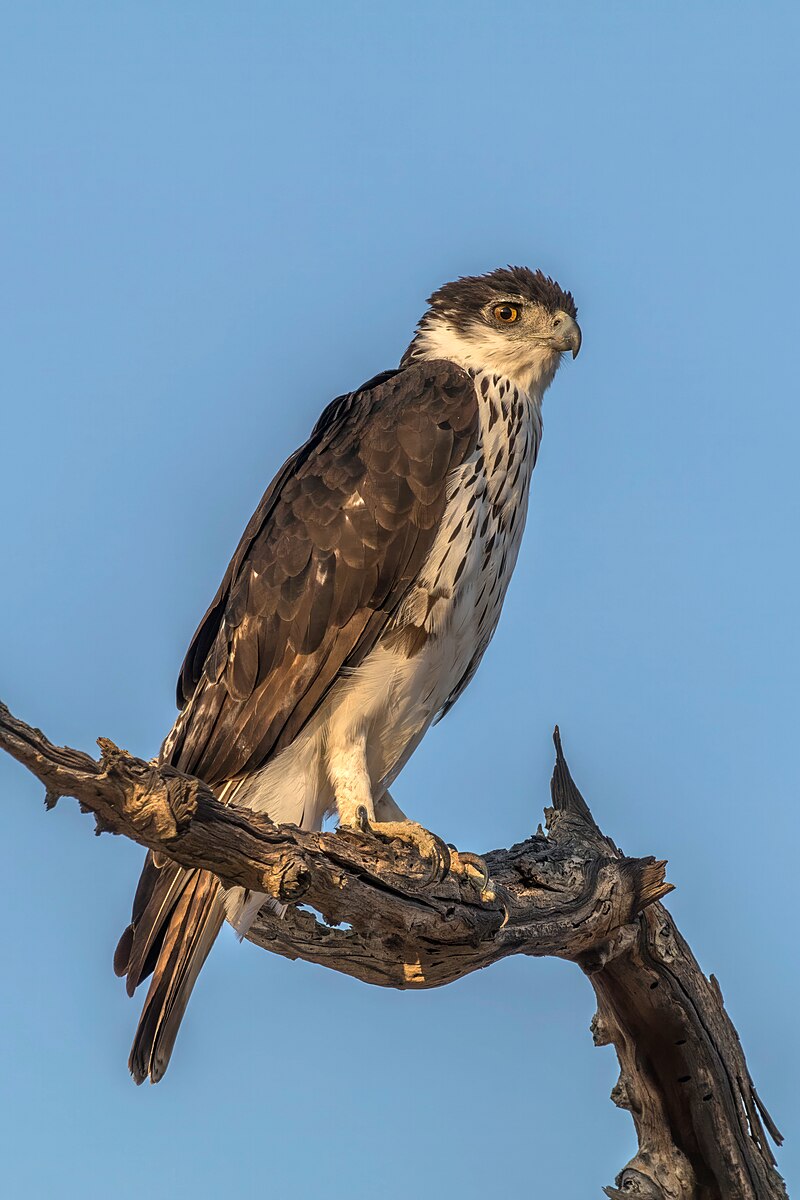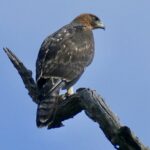African hawk eagles mate through a complex process involving courtship rituals and breeding displays. These birds are typically solitary but can be found in pairs, particularly during the breeding season. The mating process begins with aerial displays, where the male and female circle each other in the air while calling out to one another.
Courtship Rituals and Breeding Displays
The male African hawk eagle may engage in a sky dance, where it performs shallow undulations, steep plunges, and short rises with little wing flapping. During this display, the male may dive towards the female, who responds by turning to the male and displaying her claws.
Once the male and female have established a bond, the male presents the female with nuptial gifts in the form of prey. This behavior is thought to strengthen the pair bond and may also serve as a way for the male to demonstrate his hunting skills to the female.
Monogamy and Breeding Seasons
 Image source: African hawk-eagle by Charles J. Sharp
Image source: African hawk-eagle by Charles J. Sharp
African hawk eagles are highly monogamous and often pair for life, although there have been reports of potential polygyny in some populations. Breeding occurs from October to April in the north of the Equator, while it is in February-June in The Gambia. In East Africa, the nesting season is often into April-January, and in Uganda, egg laying has been reported from September to November with a juvenile bird seen by January.
Nest Building and Egg Laying
Nests are built in the main fork of a tree and are lined with green leaves. Females lay one to two eggs, which are incubated for approximately 45 days. The chicks are altricial, meaning they are born blind and helpless, and are cared for by both parents until they fledge at around 70-75 days old.
Physical Characteristics
In terms of physical characteristics, the African hawk eagle has a small head with a long neck and beak, a longish tail, long and slender feathered legs, and large, robust feet. Adults have a pied look, with slate black-grey coloration above and whitish coloration below. The underside is white with bold but small and sparse drop-like blackish streaks. Sexual dimorphism is present in the underside markings, with males having sparser markings than females.
Juveniles are moderately dark brown above with some pale edging, a slightly black-streaked head, and a more clearly barred tail than adult hawk-eagles. The underside has a tawny-rufous base color. As they develop into immature birds, their upperside becomes progressively darker, the underside paler and more streaked, and a subterminal tail band forms.
Territorial Behavior
African hawk eagles are highly possessive of their mates, nests, and territories and will attack humans who venture too close. They are found throughout the Kruger Park, particularly in well-wooded areas, and are known to hunt game birds, small mammals, reptiles, and insects.
In conclusion, the mating process of African hawk eagles is a complex and fascinating process that involves courtship rituals, breeding displays, and nuptial gifts. These birds are highly monogamous and often pair for life, with breeding occurring during specific seasons and nests built in the main fork of a tree. Juveniles are distinct in appearance from adults and undergo a series of changes as they develop into immature birds. African hawk eagles are highly possessive of their territories and are known to attack humans who venture too close.
References:
– https://en.wikipedia.org/wiki/African_hawk-eagle
– https://animalia.bio/african-hawk-eagle/
– https://birding.krugerpark.co.za/birding-in-kruger-raptor-eagles.html


